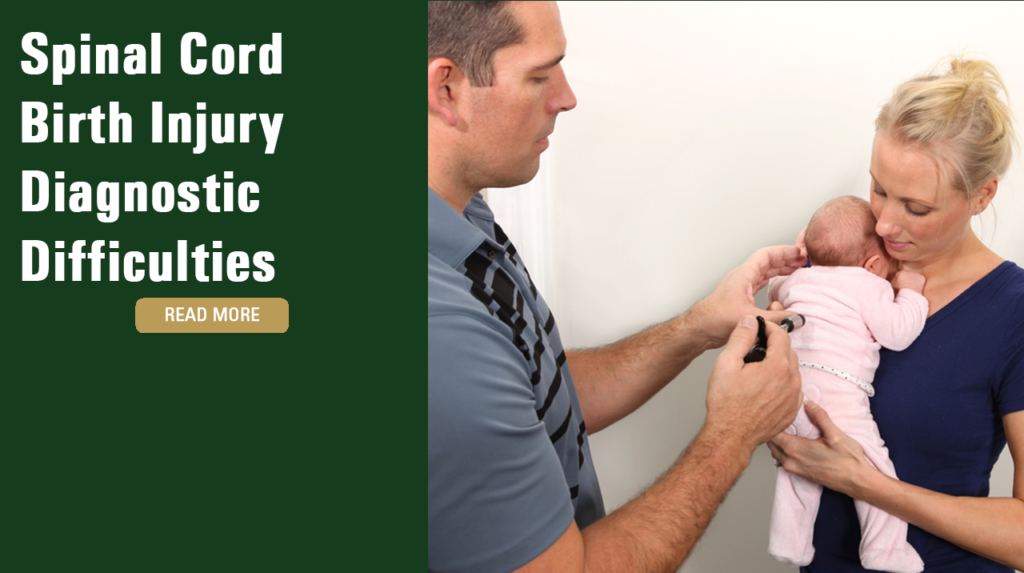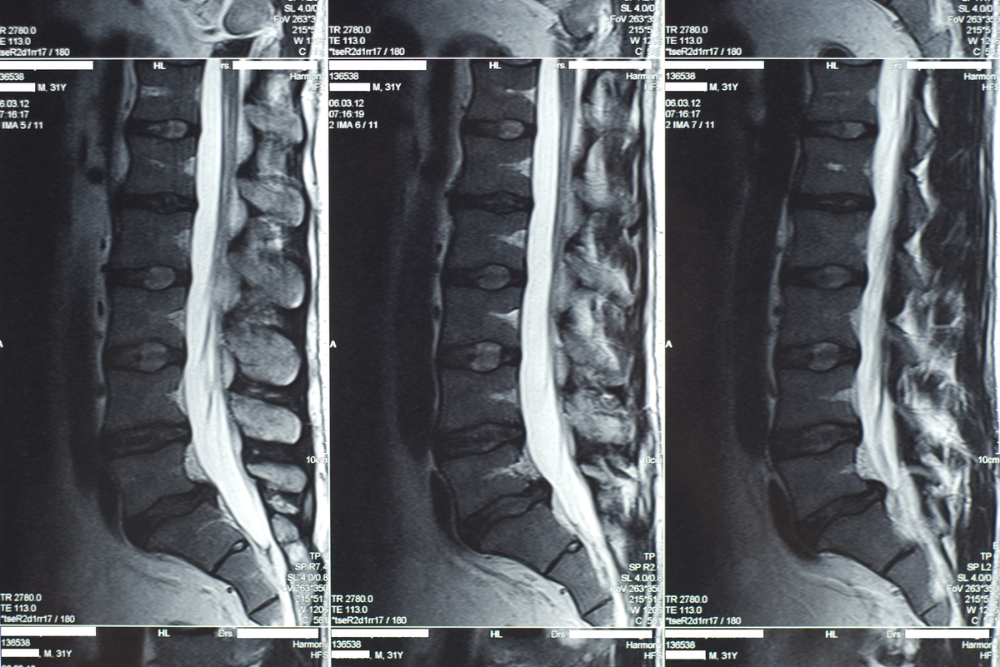Spinal Cord Birth Injury Diagnostic Difficulties

The human spinal cord and the brain make up the central nervous system. The spinal cord carries signals from nerves to the brain and back to the remainder of the body along the peripheral nerves. The critical role of the spinal cord for functioning means that even a slight spinal cord injury can have devastating impacts on your infant. Spinal injuries that happen at birth are generally associated with difficult deliveries.
Fortunately, spinal cord birth injuries have become rarer as prenatal care has become more advanced. However, they can still happen in some situations. When an infant has a spinal cord injury, prompt intervention can improve the baby’s outcomes. Unfortunately, diagnosing infant spinal cord injuries is difficult. Raynes & Lawn can help you understand a spinal cord injury at birth and whether you might be eligible to pursue compensation.
What Is A Spinal Cord Injury?
The spinal cord is made up of a bundle of nerves that carry messages between the brain and various areas of the body. When the spinal cord is damaged, the communication between the brain and the areas of the body below the damaged area can be interrupted, resulting in permanent or temporary changes in sensation and muscular function.
Injuries to the spinal cord in the neck are called cervical spine injuries. Depending on the injury, a cervical spinal injury can cause quadriplegia, which is a complete loss of control over the torso and all four limbs. If the spinal cord is damaged near its top, the injury can be fatal. Damage to lower areas of the spine might only impact the infant’s legs.
Spinal cord injuries can occur in any area along the spine. The effects of a spinal cord injury occur below the location of the injury. There are two types of spinal cord injuries, including complete and incomplete injuries.
In a complete spinal cord injury, the spinal cord is fully compressed or severed. In this type of injury, the victim will lose all sensation and movement below the site of the injury. In an incomplete spinal cord injury, the spinal cord will be damaged but can still transmit some signals below the injury site. A victim with an incomplete spinal cord injury might retain some degree of movement and sensation. In some cases, a person with an incomplete injury might fully recover with rehabilitation and other interventions.
Signs And Symptoms Of A Spinal Cord Injury
When spinal cord injuries occur, most signs will be immediately visible. However, it can take between 30 minutes and four days for symptoms to be fully apparent.
You can watch your baby to check for the following signs of a spinal cord injury:
- Loss of muscular function in the limbs
- Lack of reflexes or loss of bodily sensation
- Spasms
- Infant seeming floppy when picked up
- Breathing issues
- Loss of bowel or bladder function
Diagnosis And Treatment Of Spinal Cord Injury
Spinal cord injuries in newborns can be difficult to diagnose for several reasons. Some of the signs might appear like other babies or other conditions. For example, a newborn infant will not have any control of his or her bowel movements or bladder at birth naturally. Breathing issues, a lack of muscular function, and spasms can also indicate other medical conditions.
Floppiness, stiffness, and spasms can all be signs of cerebral palsy. Since there is an overlap of symptoms between these two types of conditions, your doctor should run tests to rule out differential diagnoses so that he or she can properly diagnose your baby with a spinal cord injury. One significant difference between spinal cord injuries and cerebral palsy is that spinal cord injuries often show immediate signs while mild cerebral palsy might not be detected for months.
Some types of spinal cord injuries, including spina bifida, are diagnosed before birth. Routine blood tests during pregnancy can reveal that a fetus has spina bifida, so your doctor will be prepared to help prevent your baby from suffering permanent damage when you give birth.
If your baby shows signs that he or she might have suffered a spinal cord injury after he or she is born, your doctor will run tests and physically examine him or her to provide a diagnosis by ordering x-rays, CT scans, or MRIs. An x-ray can help your doctor see if any of your baby’s vertebrae have been fractured, but a small fracture might not be visible with an x-ray. A CT scan can provide a more detailed picture of the vertebral column but cannot show issues with the nerves. An MRI is the best way to diagnose a spinal cord birth injury because it can show spinal cord lesions, tumors, and compression. Once a spinal cord injury has been diagnosed, the treatment will be focused on preventing complications and further injuries. If your baby is at risk of suffering a spinal cord injury, the labor and delivery team should take precautions. For example, if your baby has spina bifida, is abnormally large, or is positioned incorrectly, a scheduled C-section might be necessary.
If your baby has a spinal cord birth injury, immediate medical intervention is required. Your doctor might administer medication to stabilize your baby’s injury and decrease inflammation and swelling. Surgery might be recommended to release pressure or examine the damage. Depending on its severity, your baby might need a catheter, feeding tube, and respirator.
Spinal cord injuries do not have a cure. The goal of treatment is rehabilitation through therapy. In many cases, treatment of a spinal cord injury will be ongoing, lifelong, and involve a team of professionals who will work with your baby as he or she grows to provide him or her with the best chance at achieving independence.
Receiving Financial Compensation For Spinal Cord Injury
Discovering that your infant has a spinal cord injury can be emotionally and financially devastating. Depending on how the injury occurred, you might be entitled to pursue a birth injury lawsuit against the responsible medical professionals. If your baby’s injury was caused by medical mistakes, you could recover compensation.
To recover compensation, you will need to be able to prove that the care provided by the medical professionals was negligent and fell below the expected standard of care. You will also have to prove that the negligence caused your infant’s spinal cord injury and your resulting losses. The attorneys at Raynes & Lawn can help you understand whether your baby’s injuries were likely caused by malpractice. Call us today for a free consultation at 1-800-535-1797.

For the general public: This Blog/Website is made available by the law firm publisher, Raynes & Lawn, for educational purposes. It provides general information and a general understanding of the law but does not provide specific legal advice. By using this site, commenting on posts, or sending inquiries through the site or contact email, you confirm that there is no attorney-client relationship between you and the Blog/Website publisher. The Blog/Website should not be used as a substitute for competent legal advice from a licensed attorney in your jurisdiction.
For attorneys: This Blog/Website is informational in nature and is not a substitute for legal research or a consultation on specific matters pertaining to your clients. Due to the dynamic nature of legal doctrines, what might be accurate one day may be inaccurate the next. As such, the contents of this blog must not be relied upon as a basis for arguments to a court or for your advice to clients without, again, further research or a consultation with our professionals.

